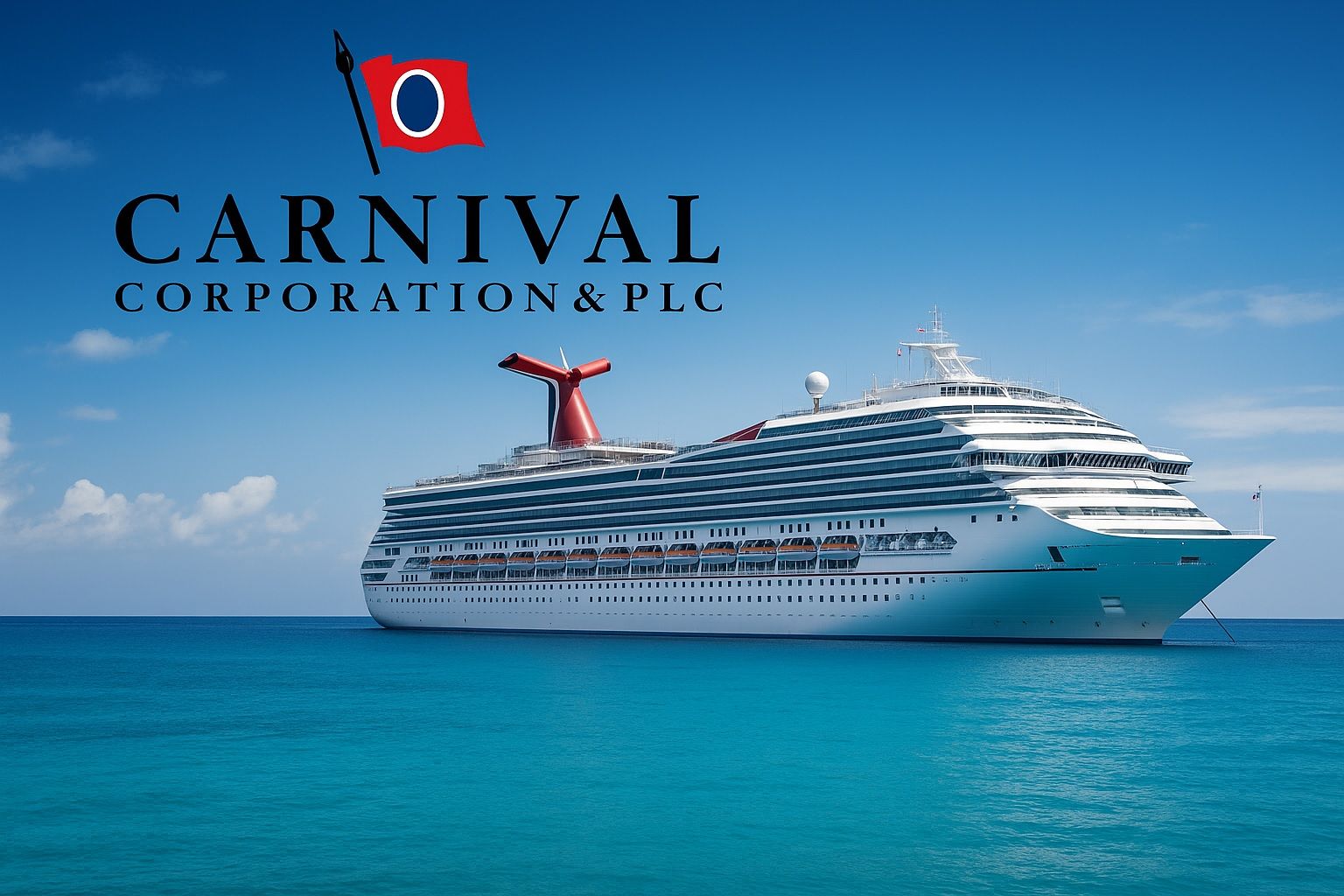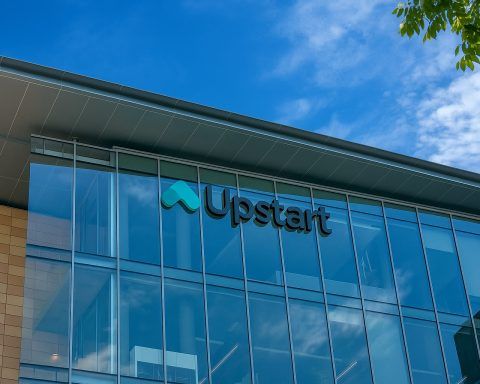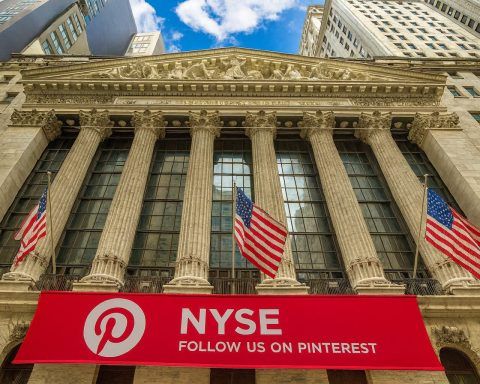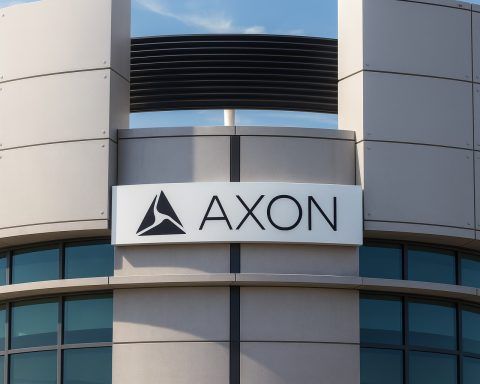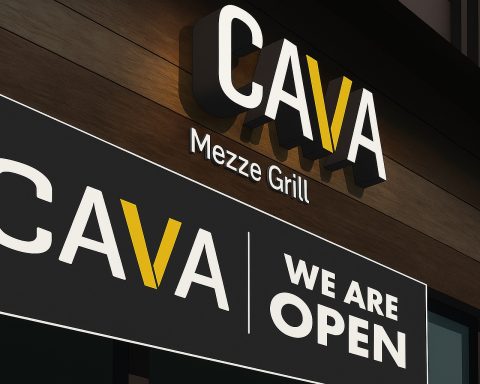- Current Stock Price: As of Nov 4, 2025, Carnival Corporation (NYSE: CCL) trades around the high-$20s per share. It closed at $28.71 on Nov 3 [1], near the top of its 52-week range ($15.07 – $32.80) [2]. However, shares dipped ~7% to ~$26.5 in early trading on Nov 4 amid a broader market sell-off [3].
- Recent Price Action: CCL stock has pulled back from its 2025 peak of $32.80 [4]. Despite a post-earnings dip (–3.6% in late Oct) [5], the stock remains up dramatically year-to-date (it started 2025 near $18). Its 50-day average is ~$30 and 200-day average ~$27, reflecting a strong uptrend through mid-2025 [6].
- Latest Earnings (Q3 FY2025): Carnival posted record quarterly net income of $1.9 billion (EPS $1.33) [7], and adjusted EPS of $1.43 beating estimates ($1.32) [8]. Revenue hit an all-time high $8.2 billion [9] (10th consecutive record revenue quarter), driven by strong post-pandemic cruise demand and higher pricing. Management again raised full-year 2025 profit guidance by ~55% YoY [10].
- Guidance & Outlook: Carnival now expects Q4 FY2025 EPS around $0.23 and full-year FY2025 EPS ~$2.14 [11] – a huge swing back to profitability. 2026 outlook is upbeat: advance bookings for 2026 are in line with 2025’s record levels at historically high prices [12] [13]. Analysts forecast continued earnings growth into 2026, with Wall Street’s consensus 12-month price target ~$33 [14] (about 15% above recent prices). Some bullish analysts see upside toward $36 (~28% gain) given Carnival’s improving margins and demand trends [15].
- Analyst Sentiment: The stock carries a “Moderate Buy” consensus from 26 brokerages as of Nov 4, 2025 [16]. Seventeen analysts rate CCL a Buy (one Strong Buy) versus 8 Holds [17]. Recent upgrades include JPMorgan lifting its target from $34 to $39 (Overweight) [18] and multiple firms raising targets into the mid-$30s. Carnival’s forward P/E is ~12.9, below peers, and its PEG ratio ~0.6 suggests the stock is cheap relative to growth [19].
- Financial Health: Carnival’s balance sheet is heavily leveraged but improving. Debt-to-equity stands ~2.1 [20] after aggressive refinancing and repayment. In Q3, Carnival refinanced $4.5 B of debt and prepaid $0.7 B [21]; in October it issued $1.25 B of new notes at 5.125% to retire older 6.000% notes [22] [23] – moves that lower interest costs. Total debt is ~$27 B (down from ~$33 B in 2020) and is projected to fall below $22 B by 2026 [24]. Credit ratings are on the upswing: Fitch recently restored Carnival to investment grade (BBB–) and S&P has a positive outlook at BB+ [25].
- No Dividend…Yet: Carnival has not reinstated its dividend since suspending payouts in 2020. Management is prioritizing debt reduction over near-term shareholder returns. In contrast, rival Royal Caribbean (RCL) resumed dividends in 2024, which helped propel its stock to record highs [26]. Analysts generally don’t expect CCL to restart dividends until 2026–2027 when leverage normalizes [27]. A return to its pre-pandemic $2.00 annual dividend (once financially feasible) could be a major catalyst for Carnival’s stock [28].
- ESG & Sustainability: Carnival’s ESG ratings are mixed. MSCI currently rates Carnival “B” (Laggard), reflecting above-average risk exposure [29]. However, Sustainalytics assigns Carnival an ESG Risk score around 24.9 (medium risk) [30] and Refinitiv’s ESG score is a solid 70/100 [31]. The company has invested in sustainability – e.g. rolling out LNG-powered mega-ships by 2026–2027 to cut fuel use ~20–30% and reduce emissions [32]. Carnival was honored with multiple industry awards for environmental excellence in 2024, indicating progress on ESG initiatives.
- Industry Recovery & Competition: The cruise industry’s rebound is in full swing. Royal Caribbean (RCL) just reported Q3 2025 EPS of $5.74 (net income ~$1.6 B) and raised its outlook [33] [34]; RCL’s stock hit all-time highs (~$366) this year on booming demand and dividend reinstatement [35]. Norwegian Cruise Line (NCLH) likewise had a profitable Q3 (adjusted EPS $1.20) but missed on revenue, which sent its shares down post-earnings [36]. Carnival, as the industry leader, is benefiting from the same demand drivers (record occupancy and onboard spending) but still trades at a discount to peers – presenting a potential catch-up opportunity if its recovery continues.
Stock Price Performance and Recent Action
Carnival’s stock has sailed sharply higher in 2025, reflecting the company’s return to profitability and investor optimism about cruising. Shares began the year near $18 and climbed to a 52-week high of $32.80 by late September [37], roughly doubling off the 2023 lows. In recent weeks, the stock has pulled back slightly: it closed at $28.71 on Nov 3, 2025 [38]. This week saw increased volatility – on the morning of Nov 4, CCL dropped about 7.5% to ~$26.54 amid a broader market selloff [39]. (Major indices were down nearly 1% on Nov 4, as investors reacted to tech earnings and macro warnings.) Despite this dip, Carnival remains in an uptrend; its 50-day moving average around $30 is well above the 200-day near $27 [40], indicating positive momentum over the past half-year.
Short-term drivers: Carnival’s stock experienced a “sell-the-news” dip after its late-September earnings – falling ~3–4% despite blowout results [41]. Analysts attributed this to profit-taking and broader market jitters rather than fundamental problems. In fact, Carnival has now delivered 11 straight quarters of “double beat” earnings (topping both revenue and EPS estimates) [42]. Such consistency is building confidence that the turnaround is real. The stock’s modest retreat from recent highs may provide an entry point – at ~$28, CCL trades at just ~13× forward earnings, a discount to the consumer discretionary sector median [43].
It’s worth noting Carnival’s high volatility: the stock’s beta is 2.68 [44], meaning it tends to swing almost 3× more than the market. Part of this volatility comes from its heavy debt (which amplifies equity risk) and the historically cyclical nature of cruise demand. Investors should be prepared for choppy waters in the short run, as seen by the Nov 4 drop. Nonetheless, year-to-date CCL has significantly outperformed the S&P 500, thanks to the cruising comeback.
Latest News and Developments (Nov 2025)
Several notable news items have emerged in early November 2025:
- Analyst Ratings & Price Targets: On November 4, MarketBeat reported that Carnival has an average recommendation of “Moderate Buy” from 26 analysts, with 17 Buys vs 8 Holds [45]. The consensus 12-month price target is $33 [46], about 15% above the current price. In recent weeks, multiple firms raised their targets: Susquehanna to $35 (Positive) in late Sept, Citigroup to $38 (Buy) in early Oct, Tigress Financial to $40 (Buy) by mid-Oct [47]. JPMorgan in mid-September boosted its target from $34 to $39 (Overweight) [48], citing Carnival’s strengthened balance sheet and earnings momentum. This bullish sell-side sentiment underscores growing confidence in Carnival’s recovery.
- Institutional Buying: A November 4 filing recap showed the State of Michigan Retirement System increased its stake in CCL by 9.9% in Q2, now holding ~312,000 shares [49]. Other major institutions also took new positions earlier in 2025 (e.g. Causeway Capital, Nuveen, etc.) [50]. In total, about 67% of Carnival’s stock is held by institutions and funds [51] – a sign that “big money” is rotating back into the cruise sector as performance improves. As Carnival’s credit rating and financial metrics improve (potentially enabling a return to investment grade indices), institutional ownership could rise further.
- Debt Refinancing Activity: Carnival continues to proactively manage its heavy debt load. On Oct 15, Carnival closed a $1.25 billion private offering of 5.125% senior notes due 2029 [52]. The company immediately used the proceeds (plus cash) to redeem all $2.0 billion of its outstanding 2029 notes (6.000% coupon) on Nov 1, 2025 [53] [54]. This savvy refinancing will reduce interest expense going forward (replacing 6% debt with 5.125% debt) and extends the maturity profile. The new notes are unsecured and guaranteed by Carnival plc and certain subsidiaries [55], showing creditors’ improving confidence. Carnival’s CFO noted this initiative “underscores [our] commitment to maintaining a flexible and efficient capital structure” [56]. In addition, management revealed in the Q3 release that they refinanced $4.5 B of debt in Q3 and prepaid $0.7 B more [57], taking advantage of strong cash flows to deleverage.
- Press Releases & Other News: Carnival’s operating brands continue to make headlines. For example, on Nov 3 Carnival’s Cunard line celebrated an historic transatlantic crossing of Queen Mary 2 [58]. Carnival Cruise Line also announced new Miami sailings and a new private destination “Celebration Key” in the Bahamas coming online – expected to host 8 million guest visits next year [59]. While such press releases are more travel-focused, they highlight Carnival’s efforts to enhance the guest experience and marketing appeal (exclusive destinations, new ships, etc.). On the flip side, Carnival faced a bit of negative press with an unusual lawsuit alleging a stateroom pest issue [60] – but such incidents have not materially impacted bookings or brand image according to the company.
- Market and Macro Context: Outside of company-specific news, macro factors have influenced CCL shares in early November. A strong earnings report from tech firm Palantir oddly contributed to a market pullback on Nov 4, as investors rotated out of high-valuation stocks [61] [62]. Additionally, Goldman Sachs’s CEO warned of potential stock market declines ahead, which spooked travel sector stocks that day [63]. These broader market jitters likely explain Carnival’s sharp one-day drop, rather than any new fundamental issue. Investors will be watching fuel prices and consumer confidence into winter 2025, as these could impact cruise profitability in the near term.
In summary, recent news paints a picture of a company gaining Wall Street’s favor (upgrades, institutional buying) and actively shoring up its finances via refinancing – all against a backdrop of robust industry demand. Apart from normal volatility, the news flow has been net positive for Carnival’s long-term narrative.
Record-Breaking Q3 2025 Earnings
Carnival’s third quarter 2025 (June–Aug period) marked a watershed moment in its post-pandemic recovery. The company achieved all-time high results on multiple fronts:
- Net Income: $1.9 billion GAAP profit (quarterly record), which equated to $1.33 diluted EPS [64]. This surpassed the previous profit record set in 2019 (pre-COVID) and was $116 million higher than Q3 2024’s net income [65]. On an adjusted basis, net income was $2.0 billion ($1.43 adjusted EPS) [66], topping guidance by $182 million thanks to stronger revenue and cost control.
- Revenue: $8.2 billion, a new all-time high and the 10th consecutive quarter of record revenues for Carnival [67]. Importantly, this revenue was achieved on slightly lower capacity than the prior year, indicating improved pricing and ship occupancy. In fact, net revenue yield (revenue per available berth) jumped +4.6% YoY (constant currency) [68], outpacing earlier guidance. CEO Josh Weinstein credited “strong close-in demand and onboard spending” for driving the yield gains [69]. Gross margin yields were up 6.4% YoY [70], showing improved profitability on sales.
- Profit Margins: Carnival’s adjusted EBITDA hit $3.0 billion (another record) [71], reflecting the combination of higher revenue and still-contained costs. Cruise costs per available berth day were up ~4.6% YoY, but this was mostly due to higher fuel prices; excluding fuel, cost per berth rose only 5.5%, which was 1.5 points better than guidance [72] – indicating effective cost management. Notably, fuel consumption per berth fell 5.2% vs last year [73], thanks to fleet efficiency upgrades and operational savings. As a result, Carnival’s net profit margin reached ~10% in Q3 (versus near-zero two years ago), and return on equity is now a robust 27.9% [74]. Management highlighted that adjusted Return on Invested Capital (ROIC) hit 13% – the first time in ~20 years it’s been that high [75].
- Cash Flow & Bookings: Operating cash flow was very strong (specific figures weren’t given in the press release, but clearly enough to cover capex and debt paydowns). An important indicator, customer deposit balances, hit record levels of $7.1 billion as of Aug 31, 2025 [76]. This means not only are guests booking in droves, but they’re booking earlier and locking in future trips. Carnival said cumulative advance bookings for 2026 are as robust as 2025’s were, and at record pricing [77] [78]. In other words, the demand pipeline remains strong well into next year, alleviating fears of any slowdown.
Carnival’s CEO was effusive about the quarter’s success. “This was a phenomenal quarter delivering all-time high net income and our tenth consecutive quarter of record revenues,” said CEO Josh Weinstein [79]. He noted that the performance was broad-based, with not only the flagship Carnival Cruise Line brand performing well but also “great advancement across the rest of our portfolio of world-class brands” [80] (which include Princess, Holland America, AIDA, Cunard, etc.). Management emphasized that even with these record results, there is “ample opportunity” to further increase yields and close the price-to-value gap versus land vacations, which would push margins higher over time [81]. In other words, Carnival believes cruises still offer tremendous value relative to hotel/resort trips, so they see room to raise prices gradually without hurting demand.
FY2025 Guidance Raised: On the heels of Q3, Carnival upgraded its full-year earnings outlook for the third straight quarter [82]. The company now expects FY2025 adjusted net income to be up nearly +55% year-over-year [83]. The latest company guidance implies FY2025 EPS of approximately $2.14 (adjusted) [84]. For context, Carnival lost over $6 per share in 2020 and ~$4 per share in 2021 during the pandemic shutdowns; the swing back to >$2 profit by 2025 underscores the dramatic turnaround. The Q4 2025 guidance is for a modest ~$0.23 EPS [85] – reflecting the seasonally slower winter quarter (fewer sailings and some ships in maintenance). That guidance appears conservative and likely beatable if demand remains steady through the holidays.
Looking ahead, analysts expect earnings to continue climbing in 2026. While Carnival hasn’t issued 2026 guidance yet, Wall Street estimates for FY2026 EPS are generally in the $2.50–$3.00 range (implying ~20–40% growth over 2025). Key drivers will be higher occupancy as remaining capacity comes back online, incremental pricing gains, and lower interest expense as debt is paid down/refinanced. Carnival’s management also hinted at the potential for resuming capital returns once leverage gets to comfortable levels – a topic we discuss in a later section.
In summary, Q3 proved that Carnival’s business is not just recovering, but potentially emerging stronger than before. It is essentially at or above 2019 performance on many metrics, despite carrying more debt. This lays a solid foundation for the next year.
Financial Health: Debt, Cash Flow, and Balance Sheet
Carnival’s debt load, amassed to survive the COVID-19 shutdown, has been the biggest overhang on the stock. At its peak, debt exceeded $35 billion in 2020-21, and credit ratings were cut to junk. The good news: Carnival is now decisively navigating into calmer financial waters by deleveraging and refinancing:
- Total Debt (as of Q3 2025) stands around $27 billion [86], down roughly $6 billion from the worst levels of 2020. Carnival has achieved this through a combination of issuing equity (in earlier years), using operating cash flow to pay down loans, and refinancing expensive debt with cheaper paper when market conditions allow. In Q3 alone, $0.7 billion of debt was prepaid ahead of schedule [87].
- Refinancing Efforts: Carnival has been opportunistic in reducing its interest burden. The October 2025 $1.25B bond deal at 5.125% (due 2029) is a prime example – it specifically targeted the redemption of older 6% notes [88]. Earlier in 2025, Carnival also refinanced other high-coupon bonds and extended maturities. The outcome is a simplified debt structure and likely lower annual interest expense going forward. (Exact interest savings from the October deal: the 6.000% notes were $2.0B – replacing them at 5.125% should save ~$17.5 million in interest annually [89].)
- Leverage and Liquidity: Carnival’s debt-to-equity ratio is ~2.1 [90], which is high, but notably improved as equity has grown with restored profits. Liquidity is adequate – the company ended Q3 with several billions in cash (exact figure not cited in our sources, but previously Carnival held ~$5.7B cash mid-year 2025). Its current ratio is 0.34 [91], reflecting that customer deposits (a current liability) are quite large. However, those deposits are more “operational” liabilities (for future cruises) rather than immediate debt due. Carnival has been comfortably covering its operating costs and near-term obligations with cash flow. In fact, by Q3 its net cash from operations for 2025 was strongly positive, enabling internal funding of investments and debt reduction.
- Interest Coverage: With EBITDA of $3B in Q3 and likely ~$7B for the full year, Carnival’s interest coverage ratio is improving rapidly. Annual interest expense is estimated around $1.5B, so coverage is around 4–5× – not great, but much better than the essentially zero coverage in 2020-2021. As old high-interest debt matures or is refinanced, interest costs will continue to drop. Carnival’s management has indicated that lowering leverage is the key to eventually regaining an investment-grade credit rating across the board (Fitch already upgraded to BBB– in late 2025 [92]).
- Credit Rating Trajectory: At present, Carnival’s bonds are rated BB+ (S&P) with a positive outlook, BBB– (Fitch), and Moody’s likely in the Ba range [93]. This is a marked improvement from a few years ago when ratings were deep into junk. If Carnival hits its target of ~$20–22B debt by 2026 (and maintains strong EBITDA), its leverage ratio would fall enough to justify solid investment-grade ratings. This is more than symbolic – returning to BBB range widens the pool of investors who can buy Carnival’s debt and stock (many pension funds and ETFs prefer IG-rated companies). It also lowers borrowing costs for any future refinancing. In short, Carnival’s balance sheet repair is on track, but it will still be an important story to watch through 2026.
- Fleet Investments: One reason debt isn’t falling even faster is that Carnival is still investing in new ships (albeit at a reduced pace). The company took delivery of several new vessels in 2023–2025, and has more on order for 2026+. However, these newer ships (many powered by LNG) are larger and more efficient, allowing Carnival to retire older ships and save on operating costs [94]. Carnival paused some newbuilds during the pandemic but has resumed its fleet optimization strategy – meaning capital expenditures will continue, but with strong ROI through fuel savings and higher revenue potential. Fortunately, with business booming, Carnival is largely funding ship investments from cash flow rather than adding net new debt.
In summary, while Carnival’s debt remains substantial, the trend is clearly improving. The company is no longer in survival mode; it’s generating billions in cash, paying down obligations, and refinancing for efficiency. There are “still miles to go” until the balance sheet is back to pre-2020 shape, but Q3’s record earnings and actions like the note redemption are hastening that journey. Investors and rating agencies appear to have growing confidence that Carnival will sail out of the storm. As one industry commentator put it, Carnival’s moves are “positioning the company for full BBB or BBB+ restoration” of credit by 2026 [95], which could open the floodgates for more institutional investment.
Dividend Status and Shareholder Returns
A key question for many investors: When will Carnival restore its dividend? Before the pandemic, Carnival was known for a generous payout – $0.50 per share quarterly (a $2.00 annual dividend), often yielding 3–4% [96] [97]. The dividend was suspended in early 2020 as cruising stopped, and it has not yet resumed given the focus on debt reduction.
Current Status: As of late 2025, Carnival pays no dividend and has not announced any share buybacks. Management has explicitly stated that paying down debt takes priority over capital returns in the near term. This stance makes sense – until earnings stabilize and leverage is under control, conserving cash is prudent. Carnival’s major debt agreements (from its emergency financing) also placed restrictions on dividends until certain thresholds are met (for example, some bonds prevent dividends until a year after those bonds are repaid, etc.). By contrast, rival Royal Caribbean reinstated a dividend in 2023 (initially a token $0.30/year, then raised to $0.80 in 2024, and further increased to $1.80 in 2025). RCL’s dividend comeback was seen as a sign of confidence and was followed by a remarkable stock surge – RCL stock roughly tripled from its pre-COVID high after reinstating and increasing its dividend [98].
Carnival is obviously eyeing Royal’s experience. Carnival’s CEO and board want to reward shareholders, but likely will wait until they are comfortably profitable and within investment grade credit metrics. Analysts predict Carnival may resume dividends by FY2026 or 2027 [99]. A Seeking Alpha analyst recently projected 2027 as a realistic timeline for dividend reinstatement, assuming debt continues to fall and cash flows remain strong [100]. Some bullish observers think it could be sooner – possibly late 2026 – if Carnival hits its debt reduction goals early [101]. In fact, Carnival could even mimic RCL by starting with a small dividend (say $0.50 annually) as a signal, then ramping up as performance allows.
When Carnival does bring back the dividend, it may aim to eventually return to that ~$2 per share annual level that was “business as usual” pre-2020 [102]. Achieving that by 2026 or 2027 would be a strong signal that Carnival is fully back on course. Share buybacks are also a possibility down the road, though likely after dividends resume. Carnival had an active buyback program pre-2020 (it repurchased shares in 2018-2019), but any buybacks are currently on hold.
For now, shareholders must be content with indirect returns – i.e. stock price appreciation – rather than cash dividends. In 2023-2025, that’s actually been a good trade-off, as Carnival plowed cash into restarting operations and trimming debt, which in turn fueled the stock’s doubling off lows. But going forward, initiating a dividend will be important to attract a broader income-oriented investor base and to demonstrate balance sheet health. Carnival’s CFO has indicated that once leverage is under ~3x EBITDA, they’ll reevaluate capital allocation to include shareholder returns.
In summary, no dividend in 2025 is almost certain. But the horizon for dividends is not far off if Carnival hits its targets. The prospect of a reinstated dividend (even a small one) could be a catalyst in the next 1–2 years. As one financial writer noted, “If the company reinstates that payout in 2026… it will send the same signal to investors that Royal Caribbean sent [in 2024]” – namely, that the crisis chapter is closed and the company is confident in its future [103]. For investors with patience, the combination of a recovering stock and eventual dividend income is an enticing long-term storyline.
ESG and Sustainability Highlights
Cruise ships are essentially floating cities, and they face significant scrutiny over environmental and social impact – from carbon emissions and waste management to labor practices and community relations at ports. Carnival, as the industry leader, has been working to improve its ESG (Environmental, Social, Governance) profile. How does it stack up?
ESG Ratings: Third-party ratings present a mixed picture for Carnival in 2025:
- MSCI ESG Rating: Carnival is rated “B” (Laggard) by MSCI [104]. This places it near the bottom of the Hotels/Travel industry in MSCI’s system (which ranges from CCC up to AAA). A “B” suggests Carnival has higher exposure to ESG risks and has not yet demonstrated strong management of those risks, relative to peers. Environmental challenges (fuel usage, emissions) likely weigh on this rating.
- Sustainalytics Risk Score: Carnival’s ESG Risk Score is ~24.9 (Medium risk) according to Morningstar Sustainalytics [105]. Sustainalytics breaks risk into categories, and ~25 is actually decent for a heavy industry company – likely reflecting that while Carnival has significant environmental impact, it also has programs in place to mitigate some issues. (For context, many oil companies have risk scores in the 30s or 40s = high risk.)
- Refinitiv (LSEG) ESG Score: Carnival scores 70/100 in Refinitiv’s ESG scoring system [106]. This is a relatively strong score (above industry average), especially on the governance and social dimensions. Carnival’s long-running sustainability reporting and initiatives have earned it recognition in some ESG indices. For example, in 2024 Carnival and its Germany-based AIDA Cruise line won awards for environmental excellence in shipping [107]. Refinitiv’s scoring likely rewards such efforts and transparency.
Overall, Carnival has “average” to “lagging” ESG ratings, indicating room for improvement, particularly on environmental factors. Notably, Carnival has no public net-zero carbon target year yet [108], whereas many travel companies are committing to 2035 or 2050 goals. The company does participate in carbon reduction programs (it reports to CDP, etc.), but investors may want to see more ambitious targets. Carnival has said it’s evaluating setting a science-based emissions target, but nothing official as of Nov 2025 [109].
Environmental Initiatives: Carnival has taken substantial steps to reduce its environmental footprint, which should improve its ESG standing over time:
- It invested in a new generation of LNG (liquefied natural gas) powered ships. Brands like AIDA, P&O, and Carnival Cruise Line have introduced LNG mega-ships (e.g. Mardi Gras, AIDAnova), and more are coming in 2026–2027 [110]. LNG virtually eliminates sulfur emissions and particulate matter, and cuts CO₂ emissions by ~20% per unit of power [111]. These ships also have advanced waste treatment and energy recovery systems.
- Across the fleet, Carnival has been installing scrubbers to reduce sulfur from traditional fuel exhaust and adding shore power capabilities so ships can plug in at port instead of burning fuel. The 5.2% drop in fuel consumption per berth in 2025 [112] indicates efficiency gains, likely from new vessels and itinerary optimizations.
- Carnival has a goal to achieve 40% carbon intensity reduction by 2030 vs 2008 baseline (a goal previously stated in sustainability reports). This goal aligns with broader maritime industry targets. The company already hit a ~35% reduction by 2022, so it’s on track.
- Waste & recycling: Carnival claims that 100% of its ships have advanced waste water treatment systems, and it’s reducing single-use plastics on board. Some of its lines have piloted biofuels and battery hybrids in port.
Social & Governance: On the social side, Carnival scored points during the pandemic by repatriating crew safely and later by being a leader in vaccinating crew members. It has a diverse workforce and has public commitments to employee well-being and inclusion. Carnival Corporation’s board governance has also been strengthened in recent years – for example, splitting the CEO/Chair roles and adding a new Chief Compliance Officer post-2020. These moves likely contribute to relatively good governance scores (Carnival’s governance risk is rated low by Sustainalytics, with a sub-score around 4.3 which is quite good [113]).
Carnival’s community impact is also notable: the company and its foundation contribute to port communities and disaster relief. In 2025, for instance, Carnival ships delivered hurricane aid in the Caribbean, and the company partnered with several Caribbean islands to improve port facilities (often a win-win for locals and cruise tourism).
In summary, ESG is an ongoing journey for Carnival. The industry inherently has environmental challenges, but Carnival is adopting new technologies and practices to be cleaner and more efficient. While ratings like MSCI’s still label it a “Laggard,” the trajectory seems positive – evidenced by awards and improving metrics. Investors with a focus on sustainability will watch for Carnival to perhaps set a net-zero target and continue fleet modernization, which could eventually earn it higher ESG marks and appeal to ESG-focused funds.
Competitive Landscape: Carnival vs. Other Cruise Giants
Carnival Corporation is the world’s largest cruise company, but it doesn’t sail alone. Its main publicly-traded competitors are Royal Caribbean Group (RCL) and Norwegian Cruise Line Holdings (NCLH). All three have benefited from the cruise comeback, though their financial profiles differ. Here’s how Carnival stacks up:
- Market Share & Brands: Carnival, through its nine cruise brands (Carnival Cruise Line, Princess, Holland America, Seabourn, Costa, AIDA, P&O, Cunard, etc.), has the largest passenger capacity – roughly 45% global market share pre-pandemic. Royal Caribbean (which owns Royal Caribbean International, Celebrity, and Silversea) has about ~25% share, and NCLH (Norwegian, Oceania, Regent) around ~10%. Carnival’s portfolio covers all segments from budget to ultra-luxury, giving it a broad reach. This also means Carnival’s fortunes mirror the industry average in many ways.
- Recent Earnings Performance: In Q3 2025, Royal Caribbean blew past its pre-pandemic records – posting net income of $1.64 billion (adjusted EPS $5.75) on revenue of $5.1B [114]. RCL’s load factors hit 112% (more passengers than lower berths due to kids in rooms, etc.) and yields rose ~2–4% [115]. RCL raised its full-year guidance and touted very strong close-in bookings. Norwegian Cruise Line had a more mixed Q3: it achieved record revenue ~$2.94B but saw net income of $419M (EPS $0.86) which was actually down from $475M a year prior [116] [117]. NCLH’s adjusted EPS of $1.20 beat estimates, but a slight revenue miss and higher costs caused its stock to dip [118]. In short, all players are profitable now, but Royal Caribbean is outperforming on earnings growth, followed by Carnival, then Norwegian.
- Stock Performance: Royal Caribbean’s stock (RCL) has been a high-flyer. It not only recovered to pre-pandemic levels, it soared to all-time highs around $360 this year [119] – far above its 2019 high of ~$135. Investors rewarded RCL for its aggressive execution (it cut costs, raised liquidity, and was first to restore dividends). Carnival’s stock, by contrast, is still far below its pre-2020 peak (~$72 in Jan 2018 [120]). At ~$28, CCL remains a turnaround play. Norwegian’s stock (NCLH) similarly trades around $17, well under its pre-COVID ~$58 high. Thus, Carnival and Norwegian have more “catch-up” potential if their recoveries continue, whereas Royal has already been re-rated by the market.
- Balance Sheet Contrast: Carnival has the highest absolute debt ($27B) due to its size, but Royal Caribbean actually had comparable leverage. RCL’s net debt is about $19B, and its debt/EBITDA is now under 3× thanks to big profits. Crucially, Royal Caribbean regained an investment grade credit rating and reinstated dividends in 2023-24, which, as noted, propelled its stock. Norwegian has about $12B debt, and its leverage is still relatively high; NCLH has not reinstated dividends either and likely won’t for a while. Carnival’s plan to reduce debt below $22B by 2026 [121] could put it in a similar leverage position as RCL – a catalyst for rerating if achieved.
- Operational Differences: Royal Caribbean and Norwegian have been building bigger and flashier ships recently (e.g. RCL’s Icon of the Seas launching 2024 is the world’s largest cruise ship and has garnered record bookings). Carnival has taken a more measured approach, focusing on upgrading its existing fleet and introducing new classes slightly gradually. Carnival’s brands target a slightly more value-conscious demographic on average (especially Carnival Cruise Line, which is more “mass market fun”). Royal Caribbean targets families and experience-seekers with high-end amenities (e.g. skydiving simulators, etc.), and Norwegian targets a premium mainstream segment. These nuances affect pricing power – RCL’s yields are highest, NCLH next, Carnival historically lowest (but Carnival also has lower costs per berth). In Q3 2025, Carnival’s net yield was up 4.6% YoY [122], Royal’s up ~2.4%, and Norwegian’s up slightly (though NCLH had 106% occupancy vs 103% in 2019, indicating it’s pushing capacity).
- Valuation: Carnival’s valuation is currently attractive relative to peers. At ~$28, CCL trades around 14–15× trailing earnings [123] (and ~12–13× forward). Royal Caribbean, at ~$300+, trades closer to 18× forward earnings (given its higher EPS). Norwegian, with lower earnings, trades around 10× forward (but that reflects more risk). Carnival’s PEG ratio is ~0.57 [124], signaling that its growth is priced cheaply. For investors, this means if Carnival delivers on the expected earnings growth (50%+ EPS expansion this year, continued growth next), there’s room for multiples to expand.
To illustrate: some analysts argue that if Carnival achieves similar financial metrics as Royal Caribbean by 2026 (in terms of margins and leverage), its stock could re-rate toward RCL’s valuation levels. Royal’s P/E got up to ~22× in 2025 [125], whereas Carnival is ~13× – a gap that could close as confidence in Carnival rises. A speculative bullish case floated by one commentator suggested Carnival’s stock “could re-rate in a powerful multi-year move… placing CCL in striking distance of $150–$200 over the coming cycle” [126] [127]. That would require a tripling or more, akin to what Royal experienced. While that’s an extreme optimistic scenario, it underscores the idea that Carnival’s valuation has room to run if it executes and the industry remains on a growth trajectory.
- Industry Growth: All cruise operators benefit from the secular trend that cruising is growing in popularity worldwide. Industry projections show ~10% compound annual growth through 2030 in cruise passengers [128]. The post-pandemic surge (pent-up demand) gave a one-time boost, but demographic trends (millennials and retirees both showing interest in cruising) and expansion into new markets (Asia, Middle East) support long-term growth. Carnival, Royal, and Norwegian are all adding capacity (in a measured way) to capture this. Carnival’s diversified brand portfolio may give it an edge in reaching different customer segments globally.
In summary, Carnival is in a solid competitive position: it has the largest fleet and global footprint, and now that it’s fixing its finances, it can play offense again (new ships, new destinations like Celebration Key). Royal Caribbean set the bar with an earlier return to strong profitability and investor rewards, but Carnival is catching up fast. Norwegian is also doing well but is a smaller player with perhaps less financial flexibility. For investors, owning Carnival offers broad exposure to the cruise industry’s recovery, whereas Royal offers a slightly lower-risk (but higher-priced) play, and Norwegian a higher-beta, higher-risk play. Carnival’s risk/reward now looks compelling, provided it can emulate some of Royal’s successes (like restoring dividends, continuing to beat expectations).
Outlook: Short-Term and Long-Term Forecasts
Short-Term (Late 2025 – 2026): In the immediate term, Carnival’s outlook is upbeat yet cognizant of a few challenges:
- Carnival heads into the winter wave season (Q4 and Q1) with strong bookings. The company’s Q4 guidance of ~$0.23 EPS [129] is conservative – analysts suspect Carnival could beat that if holiday cruise demand surprises to the upside or if costs (like fuel) come in lower. One thing to watch is fuel prices: fuel is ~15% of Carnival’s operating costs, and while consumption per cruise is down, price volatility can impact quarterly earnings. Carnival does do some hedging, but a spike in oil could be a minor headwind.
- Consumer demand remains robust. There’s little evidence so far of the “post-pandemic travel boom” fading – in fact, Carnival said booking volumes since May have only strengthened [130]. The concern would be if macroeconomic conditions (high interest rates, inflation) start curbing consumer discretionary spending on vacations. So far, cruise lines have been somewhat insulated – cruises still offer a cost-effective vacation, and Carnival’s management noted an “unbelievable price-to-value gap versus land-based vacations” that they can exploit [131]. This implies Carnival could even raise prices a bit without losing customers, supporting near-term margin goals.
- 2026 Prospects: Carnival has essentially full visibility on early 2026 bookings, and they are in line with 2025 (which was a record year) [132]. Prices for 2026 cruises are higher, contributing to likely revenue growth in the mid-single digits even without more ships. Carnival will also see a few new ships join the fleet in 2026 (for instance, Princess Cruises’ Sun Princess debut, and Carnival Cruise Line’s next Excel-class ship). New capacity will drive additional revenue. On the cost side, older, less efficient ships have been retired, so 2026’s cost base should improve (plus interest expense will be lower after 2025’s refinancings). Therefore, 2026 earnings should climb. Current analyst consensus (approx.) is for FY2026 EPS in the high-$2 range, which would be ~30% growth over 2025. If achieved, that still wouldn’t match 2019’s EPS (~$4.32), but it’s getting closer.
- Carnival also indicated that by 2026 they expect to be in a position to consider reinstating the dividend if trends hold [133] [134]. Even a small payout could come late 2026. However, this is not guaranteed; they will likely update investors on capital allocation plans at the end of 2025 or during 2026 as debt metrics improve.
- Risks in the short term: Aside from fuel and consumer spending, one risk to watch is geopolitical events. Events like conflicts or health outbreaks can impact cruise itineraries or port availability. (E.g. in 2024-25, the Israel-Gaza conflict caused some cruise reroutings in the Middle East, though Carnival has minimal exposure there; hurricane seasons can disrupt Caribbean schedules.) Another risk: foreign exchange – Carnival earns revenue in many currencies (British pounds, euros, etc. through brands like P&O, Costa) but reports in USD. A strong dollar can reduce reported revenue. Lately, currency has been a slight headwind but manageable.
Long-Term (2025 and beyond): Over a multi-year horizon, the trajectory for Carnival appears promising if execution continues:
- The cruise industry is growing. As mentioned, passenger growth of ~10% CAGR is expected through 2030 [135], aided by emerging markets. Carnival is positioned to capture a big chunk of that, especially with its new ships targeted at Chinese and North American markets once fully open. The company’s mention that it sees “ample opportunity” to boost yields further and attract more first-time cruisers [136] [137] indicates confidence in demand elasticity.
- Margin expansion: Carnival’s CEO talked about closing the “margin gap” with land vacations [138]. Pre-pandemic, Carnival’s operating margin was ~17-18%. It dipped negative in 2020-21, but has climbed back into double digits. There’s potential to reach ~20%+ operating margins by 2027 if pricing increases and cost efficiencies from technology (like LNG ships, AI-driven itinerary planning, etc.) take hold. For example, by 2027 a significant portion of Carnival’s fleet will be newer generation vessels with lower unit costs, which could structurally improve margins. Higher margins directly translate to higher EPS and cash flow, all else equal.
- Deleveraging & Investment Grade: By late 2026, Carnival’s debt could be in the low $20 billions. Combined with higher EBITDA, leverage might drop to ~3x or less. This would likely restore full investment grade credit ratings (Moody’s, S&P upgrades) [139]. Achieving IG status would lower interest rates on any new debt and perhaps allow refinancing of remaining expensive debt from the pandemic era. It also could bring Carnival stock and bonds into more institutional portfolios (some index funds only hold IG). This is somewhat abstract, but it’s a tangible goal that would mark a final turn of the corner financially.
- Return of Capital: In the long-term, Carnival intends to resume being a dividend-paying, share-buying company as it was pre-2020. By 2027 or so, one could envision Carnival paying a dividend in line with pre-pandemic levels (if not higher, given earnings growth). The CEO has hinted that once the company is sustainably profitable and debt is normalized, shareholders will “share in the benefit.” That could mean a dividend yield of 3–4% and opportunistic buybacks if the stock is undervalued. Such actions would likely be rewarded by the market, as they were for Royal Caribbean.
- Share Price Forecasts: Most analysts’ formal models currently top out with a 12-month view (target ~$33 as noted). But qualitatively, if Carnival delivers on earnings growth through 2026, the stock should follow. It’s not unreasonable that CCL could return to the $40–50 range in a couple of years, which is where it traded in 2017-2018 when business was solid (though still below all-time highs). The more optimistic scenario (espoused by some cruise bulls) is that Carnival might eventually approach its historical highs ($70+) if it experiences a multi-year “re-rating.” That would likely require a combination of: re-instated dividend, investment grade status, and continued double-digit earnings growth plus a bullish market environment. While possible around 2027–2030, it’s not something most conservative analysts are calling for yet. A more grounded expectation might be: Carnival’s earnings recover to near pre-pandemic peak by 2027, and the stock trades at a market multiple – which could imply a price in the $60s if everything goes right.
- External factors: Climate change and ESG pressures are a long-term factor too. By 2030, more regulations on shipping emissions may come into force. Carnival is mitigating this with its new tech, but it will need to stay ahead of environmental compliance (which can mean additional costs or capital investments). Also, competition isn’t standing still – if too many new ships come online industry-wide, supply could temporarily outpace demand, pressuring fares. Thus far, the big three cruise lines have coordinated growth rationally, but it’s something to watch.
Conclusion: The outlook for 2025–2026 is largely positive – Carnival is riding a wave of demand, with stronger finances to back it up. The company is guiding to significantly higher profits and has credibility after multiple beats. Short-term hiccups (market volatility, fuel swings) don’t alter the overall trend that Carnival is back in the black. Beyond 2026, Carnival’s story could shift from “turnaround” to “growth and income” – returning to a steady state of delivering vacations to tens of millions of passengers, earning solid profits, and rewarding shareholders. The cruise industry’s darkest days are astern, and Carnival is steadily regaining its sea legs as an investment-grade, dividend-paying leader in leisure travel. With record earnings already in the books and management’s clear focus on execution, Carnival Corporation & plc appears poised to keep the wind at its back heading into 2026 and beyond.
Sources:
- Carnival Corp. Q3 2025 Earnings Release Highlights [140] [141] [142]
- MarketBeat Analyst Consensus & Price Target (Nov 4, 2025) [143] [144]
- MarketBeat Stock Report & Financial Metrics [145] [146] [147]
- 24/7 Wall St. Market Live (Nov 4, 2025) – Intraday stock price [148]
- Seeking Alpha analysis “Cruising Toward Stronger Earnings” [149]
- BetweenPlays Cruise Industry Commentary (Oct 2025) [150] [151] [152]
- Yahoo Finance / Zacks recap of post-earnings stock move [153]
- GuruFocus news on $1.25B notes offering (Oct 15, 2025) [154] [155]
- Royal Caribbean Q3 2025 Press Release (PRNews/BusinessWire) [156] [157]
- Norwegian Cruise Line Q3 highlights (Yahoo/Zacks) [158] [159]
- KnowESG Carnival ESG Profile (Verified Nov 2025) [160]
- MSCI/Refinitiv ESG scores via KnowESG [161]
- MarketBeat Sustainability data (ESG risk) [162]
- Cruise Industry News – Carnival Q3 performance summary [163] [164] [165]
- MarketBeat institutional ownership & financial ratios [166] [167]
- Carnival CEO quotes via CruiseIndustryNews [168] [169]
References
1. www.statmuse.com, 2. www.marketbeat.com, 3. 247wallst.com, 4. www.marketbeat.com, 5. finance.yahoo.com, 6. www.marketbeat.com, 7. cruiseindustrynews.com, 8. www.marketbeat.com, 9. cruiseindustrynews.com, 10. cruiseindustrynews.com, 11. www.marketbeat.com, 12. cruiseindustrynews.com, 13. cruiseindustrynews.com, 14. www.marketbeat.com, 15. seekingalpha.com, 16. www.marketbeat.com, 17. www.marketbeat.com, 18. www.marketbeat.com, 19. www.marketbeat.com, 20. www.marketbeat.com, 21. cruiseindustrynews.com, 22. www.gurufocus.com, 23. www.gurufocus.com, 24. betweenplays.com, 25. betweenplays.com, 26. betweenplays.com, 27. seekingalpha.com, 28. betweenplays.com, 29. knowesg.com, 30. knowesg.com, 31. knowesg.com, 32. betweenplays.com, 33. royalcaribbeangrouppresscenter.com, 34. www.shippax.com, 35. betweenplays.com, 36. www.zacks.com, 37. www.marketbeat.com, 38. www.statmuse.com, 39. 247wallst.com, 40. www.marketbeat.com, 41. finance.yahoo.com, 42. seekingalpha.com, 43. seekingalpha.com, 44. www.marketbeat.com, 45. www.marketbeat.com, 46. www.marketbeat.com, 47. www.marketbeat.com, 48. www.marketbeat.com, 49. www.marketbeat.com, 50. www.marketbeat.com, 51. www.marketbeat.com, 52. www.gurufocus.com, 53. www.gurufocus.com, 54. www.gurufocus.com, 55. www.gurufocus.com, 56. www.gurufocus.com, 57. cruiseindustrynews.com, 58. www.carnivalcorp.com, 59. cruiseindustrynews.com, 60. www.aboutlawsuits.com, 61. 247wallst.com, 62. 247wallst.com, 63. 247wallst.com, 64. cruiseindustrynews.com, 65. cruiseindustrynews.com, 66. cruiseindustrynews.com, 67. cruiseindustrynews.com, 68. cruiseindustrynews.com, 69. cruiseindustrynews.com, 70. cruiseindustrynews.com, 71. cruiseindustrynews.com, 72. cruiseindustrynews.com, 73. cruiseindustrynews.com, 74. www.marketbeat.com, 75. cruiseindustrynews.com, 76. cruiseindustrynews.com, 77. cruiseindustrynews.com, 78. cruiseindustrynews.com, 79. cruiseindustrynews.com, 80. cruiseindustrynews.com, 81. cruiseindustrynews.com, 82. cruiseindustrynews.com, 83. cruiseindustrynews.com, 84. www.marketbeat.com, 85. www.marketbeat.com, 86. betweenplays.com, 87. cruiseindustrynews.com, 88. www.gurufocus.com, 89. www.gurufocus.com, 90. www.marketbeat.com, 91. www.marketbeat.com, 92. betweenplays.com, 93. betweenplays.com, 94. betweenplays.com, 95. betweenplays.com, 96. pocketoption.com, 97. betweenplays.com, 98. betweenplays.com, 99. seekingalpha.com, 100. seekingalpha.com, 101. betweenplays.com, 102. betweenplays.com, 103. betweenplays.com, 104. knowesg.com, 105. knowesg.com, 106. knowesg.com, 107. www.prnewswire.com, 108. knowesg.com, 109. knowesg.com, 110. betweenplays.com, 111. betweenplays.com, 112. cruiseindustrynews.com, 113. finance.yahoo.com, 114. www.shippax.com, 115. cruiseindustrynews.com, 116. www.nasdaq.com, 117. travelweekly.co.uk, 118. www.zacks.com, 119. betweenplays.com, 120. betweenplays.com, 121. betweenplays.com, 122. cruiseindustrynews.com, 123. www.marketbeat.com, 124. www.marketbeat.com, 125. betweenplays.com, 126. betweenplays.com, 127. betweenplays.com, 128. betweenplays.com, 129. www.marketbeat.com, 130. cruiseindustrynews.com, 131. cruiseindustrynews.com, 132. cruiseindustrynews.com, 133. betweenplays.com, 134. seekingalpha.com, 135. betweenplays.com, 136. cruiseindustrynews.com, 137. cruiseindustrynews.com, 138. cruiseindustrynews.com, 139. betweenplays.com, 140. cruiseindustrynews.com, 141. cruiseindustrynews.com, 142. cruiseindustrynews.com, 143. www.marketbeat.com, 144. www.marketbeat.com, 145. www.marketbeat.com, 146. www.marketbeat.com, 147. www.marketbeat.com, 148. 247wallst.com, 149. seekingalpha.com, 150. betweenplays.com, 151. betweenplays.com, 152. betweenplays.com, 153. finance.yahoo.com, 154. www.gurufocus.com, 155. www.gurufocus.com, 156. royalcaribbeangrouppresscenter.com, 157. www.shippax.com, 158. www.zacks.com, 159. travelweekly.co.uk, 160. knowesg.com, 161. knowesg.com, 162. finance.yahoo.com, 163. cruiseindustrynews.com, 164. cruiseindustrynews.com, 165. cruiseindustrynews.com, 166. www.marketbeat.com, 167. www.marketbeat.com, 168. cruiseindustrynews.com, 169. cruiseindustrynews.com
